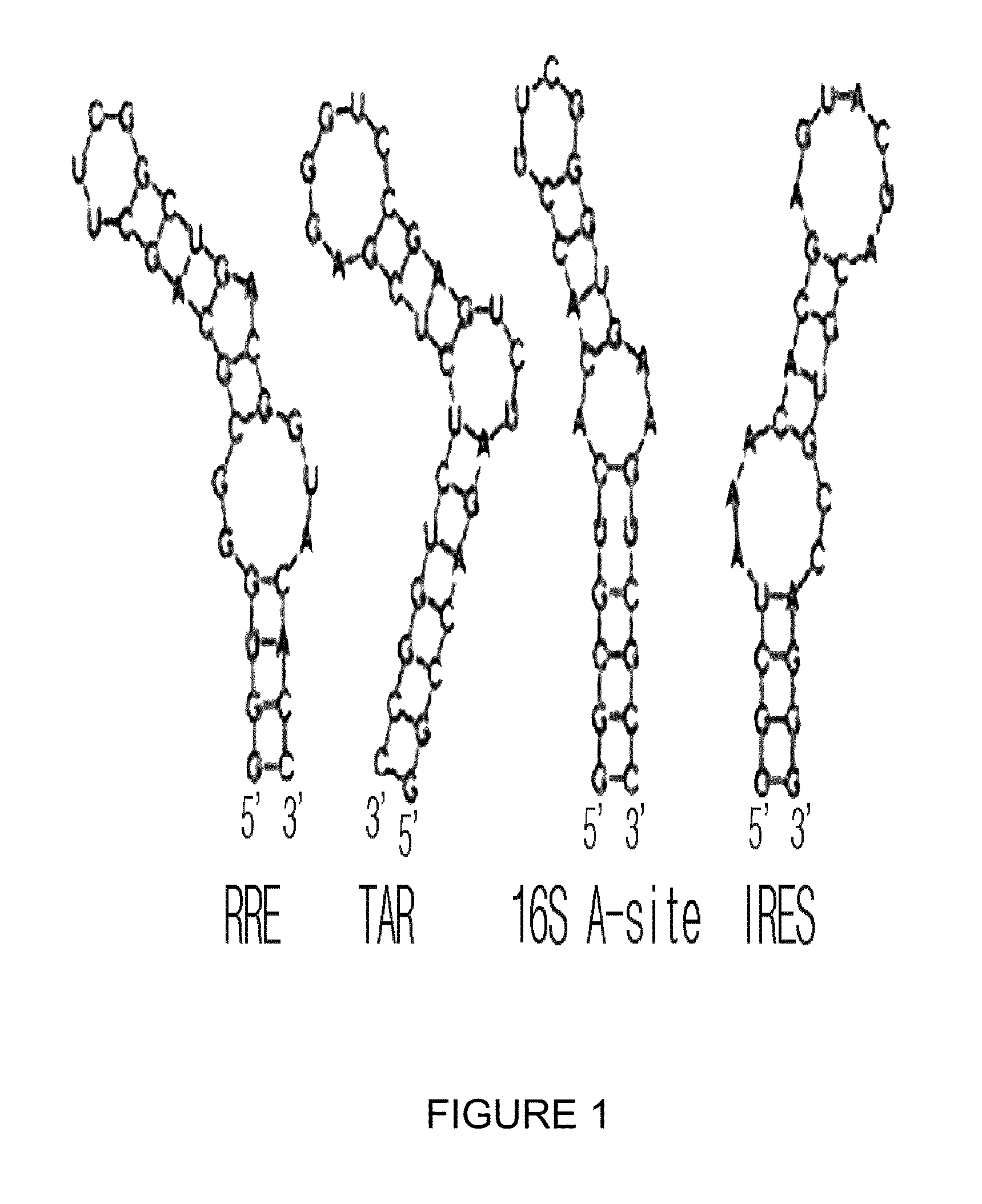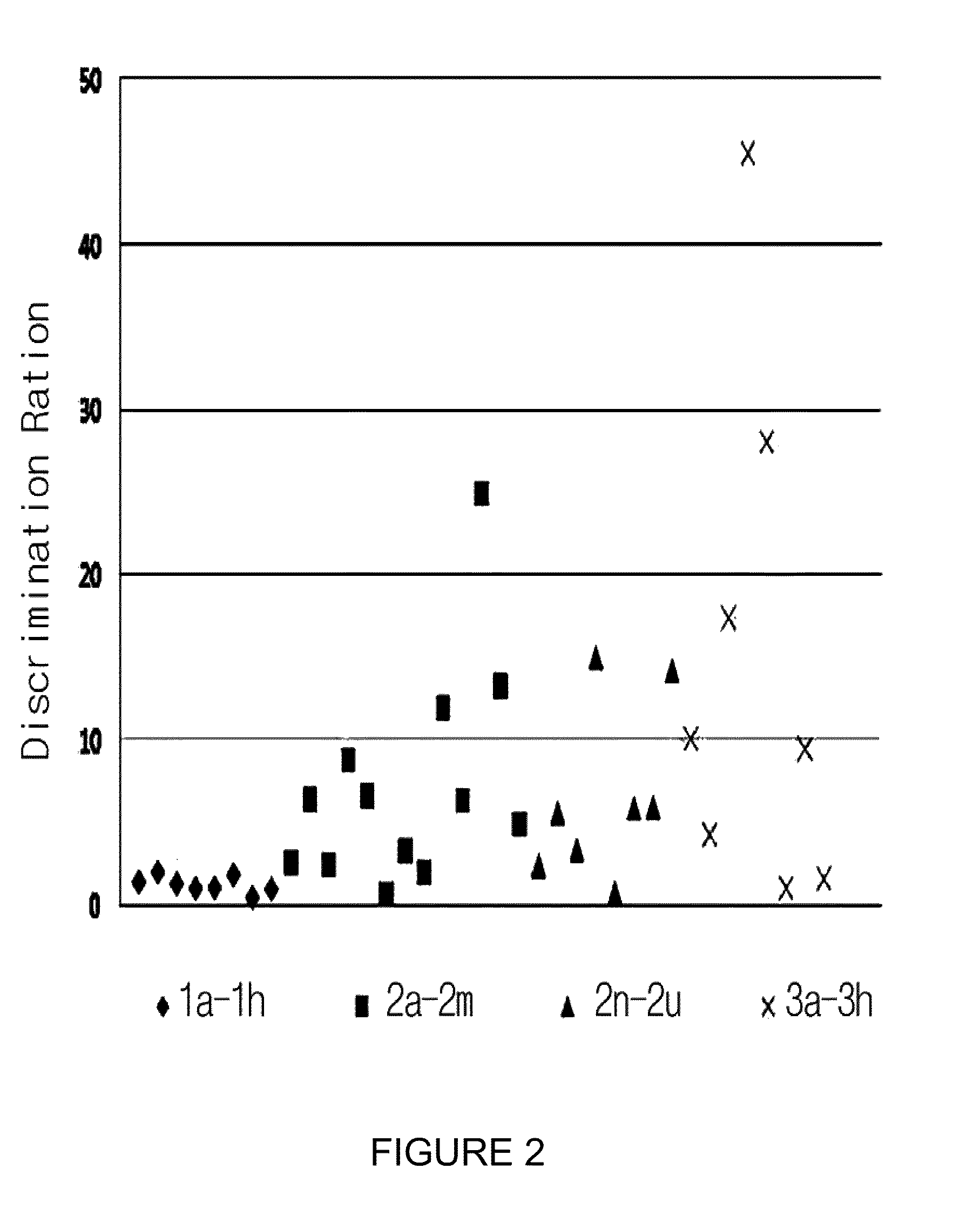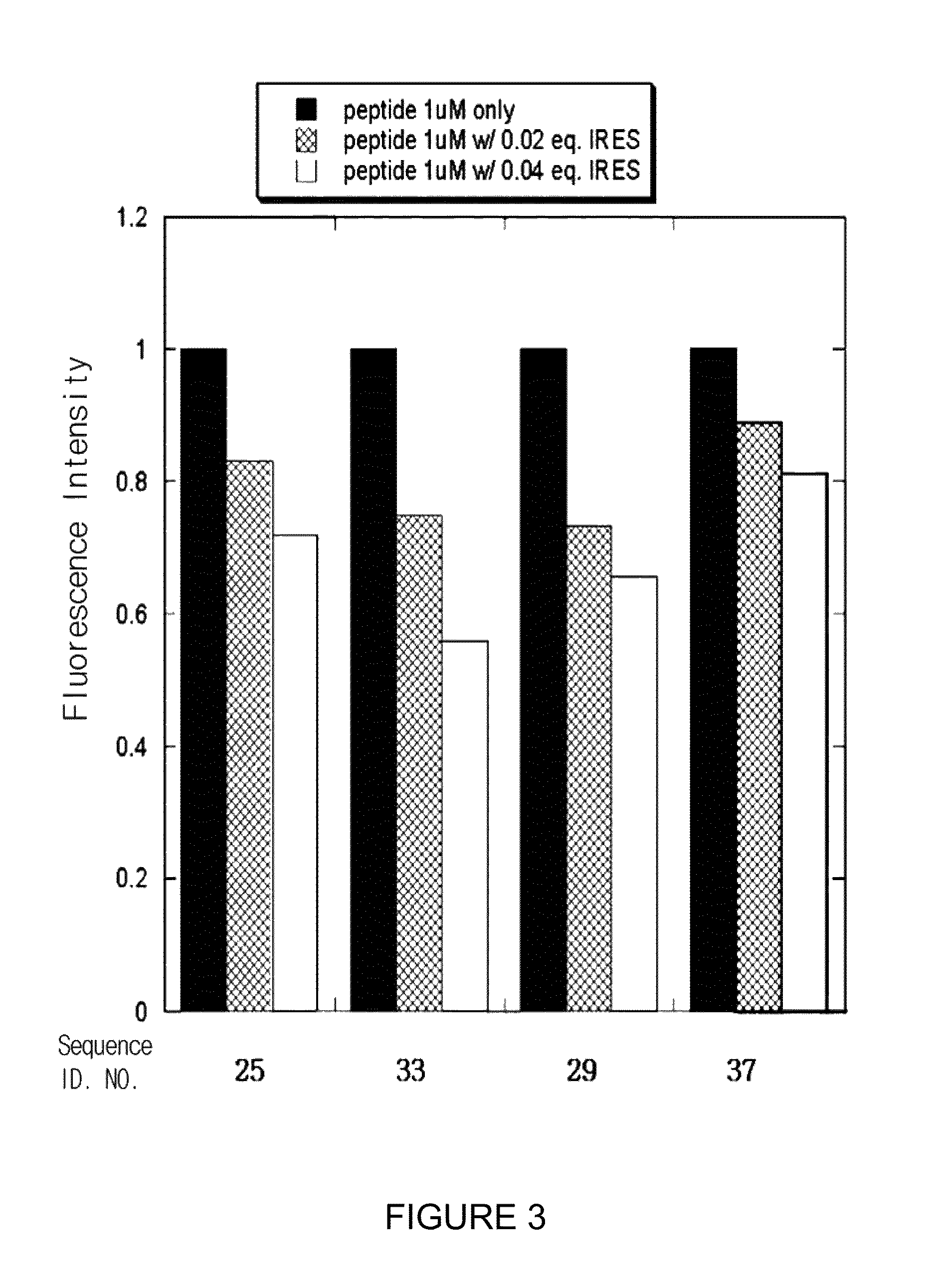Process for screening of a binding amphiphilic peptides specific for hairpin RNA
a technology of amphiphilic peptides and screening methods, which is applied in the field of screening methods for amphiphilic peptides binding specifically to hairpin rna, can solve the problems of difficult to distinguish target hairpin rna molecules, difficult to prepare a ligand specific to non-selective hairpin molecules without preparatory study, and inability to establish a method to produce ligands specific to hairpin rna by using such alpha
- Summary
- Abstract
- Description
- Claims
- Application Information
AI Technical Summary
Benefits of technology
Problems solved by technology
Method used
Image
Examples
example 1
Synthesis of Peptide
[0088]Peptide synthesis was performed by well-infirmed Fmoc solid phase peptide synthesis method. 100 mg (0.064 mmol) of Rink Amide resin (Novabiochem) was placed in a vessel, to which 1 ml of methylene chloride was added to inflate thereof. The mixture was inflated by adding 1 ml of DMF (dimethylformamide) for 5 minutes. Deprotection of the resin was performed using 1 ml of 20% piperidine (in DMF) for 5 minutes (three times), followed by washing with 1 ml of DMF five times. Six equivalents of the Fmoc-deprotected amino acid was reacted with a solution containing six equivalents (198 mg) of each PyBop [(benzotriazol-1-yloxy)tripyrrolidinophosphonium hexafluorophosphate] and DIPEA (diisopropylethylamine) for at least 60 minutes. Upon completion of the reaction, the reactant was washed with 1 ml of DMF three times. TNBS test was performed to confirm whether the reaction was successfully done. Particularly, one drop of 10% DIPEA dissolve...
example 2
Preparation of Target RNA
[0092]RNA transcription was performed in vitro using DNA as a template with T7 RNA polymerase, and then a series of separation procedure followed. DNA templates and promoter regions (underlined parts) are as follows: RRE template sequence: 5′-CCGTAATACGACTCACTATAGGTGGGCGCAGCTTCGGCTGACGGTACACC-3′ (SEQ. ID. NO: 42), TAR template sequence: 5′-CCGTAATACGACTCACTATAGGCCAGATCTGAGCCTGGGAGCTCTCTGGCC-3′ (SEQ. ID. NO: 43), 16S template sequence: 5′-CCGTAATACGACTCACTATAGGCGTCACACCTTCGGGTGAAGTCGCC-3′ (SEQ. ID. NO: 44), IRES template sequence: 5′-CCGTAATACGACTCACTATAGGGACCGTGCATCATGAGCACAAATCCC-3′ (SEQ. ID. NO: 45). Selected four hairpin RNAs were RRE hairpin RNA and TAR hairpin RNA (referred as ‘RRE and ‘TAR’) that can be a target of HIV, 16S ribosomal RNA A-site (referred as ‘16S A-site’ hereinafter), and IRES domain IV hairpin (referred as ‘IRES’ hereinafter) that can be a target of HCV. Each template DNA of IRES, RRE, TAR and 16S A-site was purchased from Sigma-Aldric...
experimental example 1
Measurement of Binding Force to Target RNA Using Alanine Scanned Peptide Library
[0095]Binding force to each target hairpin RNA (IRES, RRE, TAR and 16S A-site) was measured by fluorescence polarization using alanine scanned peptide library (1b-1h).
[0096]Particularly, 100 ml of each target RNA was prepared at the concentration of 10 mM, which stood at 65° C. for 10 minutes and then cooled down slowly at room temperature, leading to folding. The amphiphilic peptide was prepared respectively at the concentration of 100 mM and 1.0 mM, which were maintained at 0° C. As a probe, rev peptide labeled with rhodamine (Rev-N-rhodamine) emitting 200 nM fluorescence was prepared at the concentration of 10 mM. Buffer was composed of 140 mM NaCl, 5 mM KCl, 1 mM MgCl2, and 20 mM HEPES (N-2-Hydroxyethylpiperazine-N′-2-Ethanesulfonic Acid, pH 7.4). Fluorescence Anisotropy was measured using AMINCO-Bowman Series Luminescence Spectrometer at 20° C. Ten nM of the probe was added in 450 mL of buffer, to w...
PUM
| Property | Measurement | Unit |
|---|---|---|
| dissociation constant | aaaaa | aaaaa |
| dissociation constant | aaaaa | aaaaa |
| dissociation constant | aaaaa | aaaaa |
Abstract
Description
Claims
Application Information
 Login to View More
Login to View More - R&D
- Intellectual Property
- Life Sciences
- Materials
- Tech Scout
- Unparalleled Data Quality
- Higher Quality Content
- 60% Fewer Hallucinations
Browse by: Latest US Patents, China's latest patents, Technical Efficacy Thesaurus, Application Domain, Technology Topic, Popular Technical Reports.
© 2025 PatSnap. All rights reserved.Legal|Privacy policy|Modern Slavery Act Transparency Statement|Sitemap|About US| Contact US: help@patsnap.com



